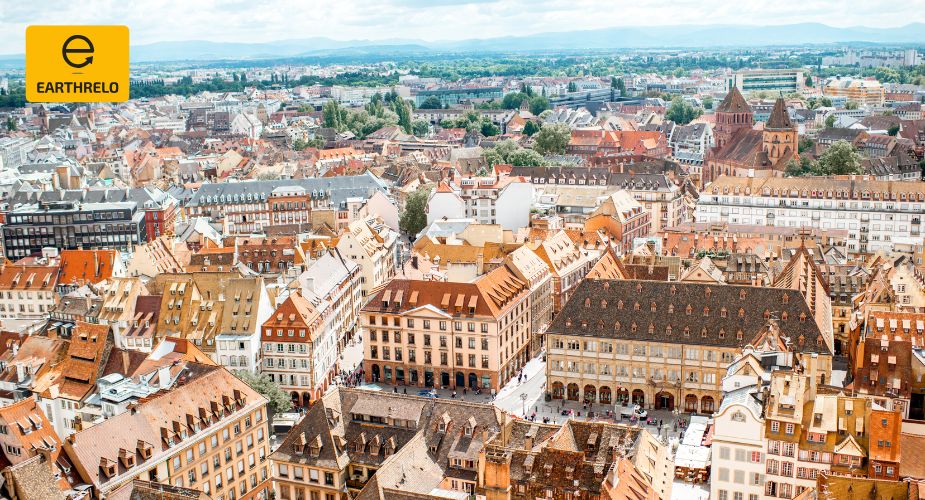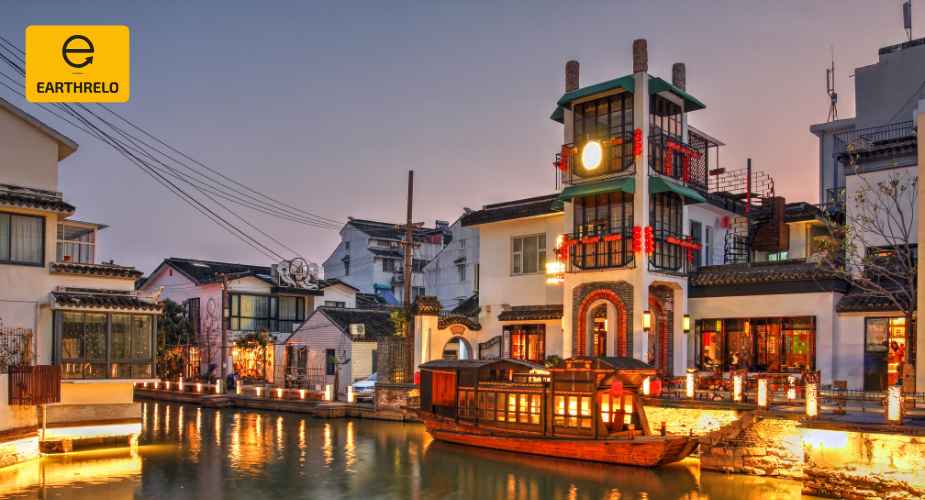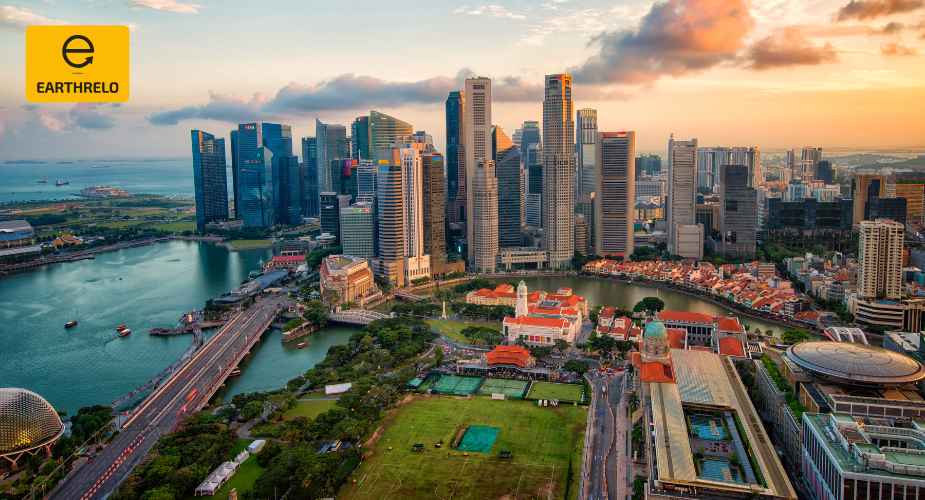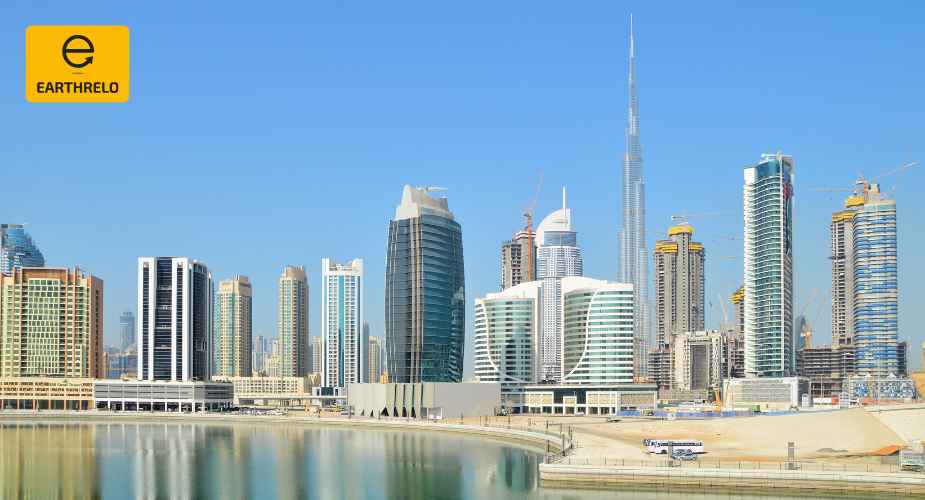- October 6, 2025
International art shipping requires a delicate balance of precision, planning, and protection—especially when transporting valuable pieces from the USA to France. Whether you’re a gallery, private collector, or institution, trusting your artwork to just any logistics provider can lead to costly mistakes. Art is more than just cargo; it’s cultural, emotional, and often irreplaceable.
France is one of the most prominent art destinations in the world, home to prestigious museums, private buyers, and international exhibitions. This popularity drives a high demand for secure, efficient, and custom-tailored international art shipping services. From contemporary sculptures to centuries-old paintings, each item must be treated with exceptional care.
At Earthrelo, we understand that art transport isn’t a one-size-fits-all service. Our role goes far beyond shipping—we provide a complete fine art freight forwarding experience with a focus on security, compliance, and climate sensitivity. Every piece tells a story, and our job is to ensure it arrives safely so that story continues.
In this guide, we walk you through what makes international art shipping successful, how to prepare your pieces, and why selecting the right logistics partner matters more than ever. Whether you’re shipping for a private showing in Paris or a gallery installation in Lyon, the journey starts here—with knowledge and the right strategy.
Relocating to France?
Contact Us TodayUnderstanding International Art Shipping
When dealing with high-value or irreplaceable artwork, international art shipping is not just about moving objects across borders. It’s a specialized process that blends logistics, conservation, and compliance into a single, high-stakes operation. This section explores what makes international art shipping so unique and how Earthrelo ensures a seamless experience from pickup to placement.
What Makes Art Shipping Different
Art is fragile in more ways than one. Unlike everyday goods, fine art reacts to humidity, temperature changes, and vibrations. Paintings may crack, sculptures can chip, and delicate materials degrade without proper handling. This is why international art shipping requires a highly customized approach that factors in the medium, age, and sensitivity of each piece.
In addition to handling concerns, international artwork transport must navigate the complexities of cross-border regulations. From customs paperwork to cultural export restrictions, each shipment is governed by legal and logistical hurdles that only experienced professionals can manage effectively. At Earthrelo, we streamline these steps to avoid delays and minimize risks.
Specialized Services Required for Artwork Transport
To protect artwork in transit, professional art logistics providers must offer much more than shipping. Services like custom crating, white-glove handling, climate-controlled transport, and real-time tracking are essential. These offerings are central to international art shipping and are often bundled into comprehensive gallery shipping services tailored to museums, collectors, and institutions.
Fine art freight forwarding also involves contingency planning. What happens if there’s a delay at customs or a weather disruption? With Earthrelo, clients benefit from proactive solutions that keep both the art and the timeline intact. Our teams are trained to anticipate challenges and respond with immediate, expert care.
Importance of Working with Art Logistics Experts
Many assume that international shipping providers can manage all cargo types—but this can be a costly mistake when dealing with artwork. International art shipping demands deep knowledge of both logistics and conservation. The difference between a general transporter and an art logistics expert is night and day.
Earthrelo’s fine art specialists are equipped with the tools, training, and insight needed to handle your collection with the care it deserves. From fragile oils to oversized installations, we treat every item as unique, ensuring it travels in the safest and most efficient way possible.
Key Considerations Before Shipping Art Overseas
Shipping fine art internationally involves far more than packaging and transport. Every artwork crossing borders must comply with specific laws, customs regulations, and logistical standards. With international art shipping, these requirements are amplified due to the value and vulnerability of the pieces involved.
Whether you’re sending a painting to a gallery in Paris or a sculpture to a private collector in Bordeaux, early planning is essential. Understanding the documentation, legal implications, and protection strategies will make the process smoother and prevent unnecessary delays or expenses.
Documentation and Legal Compliance
Artworks often qualify as cultural property, which means they may face additional scrutiny at customs. For international art shipping, shippers must prepare detailed paperwork, including invoices, certificates of authenticity, and export declarations. Incomplete or incorrect documentation can lead to delays, fines, or even seizure.
When engaging in international artwork transport, it’s important to determine whether the shipment is for sale, exhibition, or private collection. Each use case may require different declarations. France, in particular, has strict import rules for cultural goods and expects proper classification and provenance documentation.
Earthrelo provides guidance at every step of this process, ensuring all compliance measures are met so the shipment clears customs without issue.
VAT, Duties, and ATA Carnet
Taxes and duties can significantly impact the cost of art shipping overseas. Import VAT is generally applied to artworks entering France, but the exact amount varies based on the nature of the piece and its declared value. These costs must be factored into your budget early on.
For temporary imports, such as items displayed at exhibitions, using an ATA Carnet can simplify customs procedures. This document allows duty-free entry of artworks for up to 12 months, provided they are re-exported. It is an essential tool for galleries and institutions managing international art shipping between the USA and France.
Earthrelo helps clients navigate these financial and procedural complexities, ensuring that tax implications are clear and no hidden costs arise mid-journey.
Insurance and Liability
One of the most critical aspects of international art shipping and fine art freight forwarding is insurance coverage. Traditional cargo insurance may not adequately cover the full value of fine art pieces, especially one-of-a-kind items. Specialized insurance, tailored to the unique needs of art, is essential.
This insurance must cover loss, damage, and environmental exposure throughout transit and temporary storage. Earthrelo works with vetted insurance providers to offer comprehensive coverage options, giving clients peace of mind with every international shipment.
Proper insurance ensures that even in rare events of disruption, your investment is protected both financially and emotionally.
Art Packaging and Crating: Protecting Valuable Pieces
The success of international art shipping depends largely on how well the artwork is packed and crated. Fragile and high-value art requires professional-grade materials, precision engineering, and techniques that go beyond basic protection. In this section, we explore why art-specific packaging is critical and how Earthrelo ensures each piece is travel-ready.
Materials for Museum-Quality Packaging
The materials used to package fine art for international art shipping must protect it from shock, moisture, temperature changes, and vibration. Acid-free tissue paper, high-density foam, and UV-resistant glassine are often used to create a stable internal environment for the artwork.
Custom-fitted supports and padding are designed to keep the piece secure without putting pressure on delicate surfaces. For paintings, this might include floating supports that prevent canvas stretching. For sculptures, strategic bracing and non-abrasive padding help prevent fractures during art shipping overseas.
Earthrelo’s packing teams are trained in museum-level handling standards, ensuring the materials used are appropriate for each type of medium and condition.
Custom Crating for International Transport
Once the artwork is wrapped and stabilized, it must be enclosed in a crate designed for international art shipping. These crates are not off-the-shelf containers—they’re engineered specifically for the shape, weight, and fragility of each item.
Crates used in gallery shipping services often include multi-layered insulation, impact-absorbing walls, and integrated humidity controls. This design ensures that even during long transits or climate fluctuations, the art remains protected.
Earthrelo’s crate builders work with exact dimensions and specifications to ensure each piece fits securely while allowing for ventilation and inspection if required by customs.
Climate Control and Environmental Protection
Art is highly sensitive to environmental changes, especially fluctuations in temperature and humidity. Without proper protection, paintings can warp, and antique finishes can deteriorate. International art shipping must consider these variables from the point of pickup to final delivery.
For high-value shipments, Earthrelo offers climate-controlled packaging solutions that maintain ideal conditions throughout the journey. Combined with temperature-stabilized vehicles and controlled warehouses, this ensures your artwork stays protected from environmental damage during transit and temporary storage.
In the world of fine art freight forwarding, environmental stability is as crucial as physical safety. Earthrelo ensures that both are addressed through every phase of the shipment.
Choosing the Right Fine Art Freight Forwarding Partner
The success of international art shipping often hinges on the expertise of the logistics provider you choose. Shipping artwork is a delicate process that involves far more than transportation. The right partner understands the value, vulnerability, and regulatory landscape surrounding each piece.
For clients moving art between the USA and France, the choice of provider should never be left to chance. It requires a strategic, knowledgeable partner like Earthrelo—one that specializes in art-specific logistics rather than general freight.
Expertise in Art Logistics
Not all logistics providers have the training or infrastructure to handle fine art. International art shipping requires knowledge of conservation practices, cultural compliance, and secure handling from origin to destination.
Earthrelo provides tailored gallery shipping services that consider every detail, from the material of the artwork to its historical significance. Each step is managed by trained professionals familiar with the sensitivities of art logistics. From customs paperwork to final placement, your art remains in expert hands.
The value of this expertise becomes even more apparent when issues arise. Whether it’s a delay at customs or an unexpected reroute, Earthrelo ensures solutions are implemented quickly and without compromising the safety of the shipment.
Customized Planning for Each Shipment
No two pieces of art are the same, which means no two shipping strategies should be either. International art shipping should always begin with a comprehensive consultation. This is where professionals assess the piece, determine risk factors, and design a transit plan that offers maximum protection.
Earthrelo offers shipment-specific planning that considers crate design, climate requirements, insurance needs, and delivery logistics. Whether the artwork is headed for a museum, gallery, or private residence, we create a transport plan that fits the project perfectly.
By handling each shipment as a unique case, Earthrelo maintains the highest standards in art shipping overseas while minimizing the risks associated with generic solutions.
Questions to Ask Before Choosing a Provider
Clients should feel confident and informed when selecting a provider for international art shipping and fine art freight forwarding. Asking the right questions can help determine whether the service meets the necessary standards.
Important considerations include climate control availability, insurance offerings, customs support, and crate-building expertise. Earthrelo encourages open communication and transparency throughout the process so you feel comfortable entrusting your valuable artwork to our care.
With a dedicated focus on international art shipping, Earthrelo provides more than logistics—we offer peace of mind, professional handling, and customized service every step of the way.
Transport Methods for Art Shipping Overseas
Selecting the right mode of transport is critical in international art shipping. The journey from the USA to France can take many forms depending on urgency, budget, and fragility. Some artworks may require the speed of air freight, while others are better suited for the stability of ocean freight.
Understanding how transport methods impact safety and efficiency helps clients make informed decisions. Earthrelo offers flexible solutions tailored to each piece and its specific needs.
Air Freight for Time-Sensitive Art
When timing is essential, air freight is often the preferred method for international art shipping. It offers faster delivery and reduces the time artworks spend in uncontrolled environments, such as cargo bays or loading docks.
For valuable or sensitive items, Earthrelo arranges direct flights and secure handling during all transfer points. Crates are handled with extreme care, and environmental controls are implemented throughout the journey. This method is ideal for time-sensitive exhibitions or private events in France that demand a strict schedule.
Though air freight typically comes at a higher cost, its speed and reduced handling time make it a safe choice for delicate or high-value pieces.
Ocean Freight for Large or Non-Urgent Shipments
Ocean freight offers a more economical option for large or non-urgent artwork. Sculptures, installations, or entire gallery exhibits can be shipped in climate-controlled containers that ensure safety during the longer transit time.
While slower than air freight, international artwork transport via sea remains reliable and secure when managed properly. Earthrelo uses specialized containers with humidity control, shock absorption, and reinforced interior structures to safeguard every shipment.
For clients with flexible timelines, this method offers a balance between cost and protection, especially when dealing with oversized works or multiple items.
Security and Special Handling Measures
Regardless of the transport method, security is non-negotiable in international art shipping. High-value pieces are often accompanied by additional security protocols, including GPS tracking, bonded carriers, and tamper-evident packaging.
Earthrelo provides these advanced safeguards along with white-glove handling at every stage. From pickup in the USA to final delivery in France, our team ensures that each hand-off is secure and documented.
Special handling also includes lifting equipment, climate-controlled vehicles, and dedicated staff trained in gallery shipping services. This level of detail minimizes risks and keeps the focus on preservation and precision.
Customs Clearance for Fine Art in France
Navigating customs is one of the most critical stages in international art shipping. Shipments entering France are subject to strict customs inspections, documentation reviews, and tax assessments—especially when fine art is involved. Handling these procedures correctly helps ensure your artwork arrives on time and in perfect condition.
Understanding the French customs process is essential for art collectors, galleries, and institutions sending pieces from the USA.
Documentation and Classification Requirements
Fine art must be clearly classified under the correct customs codes, often falling under cultural or luxury goods. Misclassification can lead to delays, penalties, or even confiscation. Documentation must include detailed descriptions, values, and provenance. Incomplete or vague paperwork is one of the most common reasons for customs delays during international art shipping.
Earthrelo ensures all required documentation is properly prepared before the shipment leaves the United States. This includes customs declarations, commercial invoices, certificates of authenticity, and licenses when required by either country.
Customs Brokerage and Import Regulations
French customs authorities may require additional permits for specific types of artwork, particularly if the piece is considered culturally significant. For successful international art shipping, working with a licensed customs broker is often essential to streamline communication and prevent regulatory missteps.
Earthrelo offers integrated customs support as part of our fine art freight forwarding services. Our teams work closely with trusted brokers to oversee each step of the customs process. This reduces the likelihood of clearance issues and ensures your shipment proceeds without unnecessary delays.
Avoiding Common Delays
Delays in customs are often due to missing or inaccurate paperwork, under-declared values, or improper crating that raises red flags during inspections. For art shipping overseas, proactive planning is key. Earthrelo conducts pre-shipment audits to catch potential issues before they arise.
By addressing compliance early, we ensure the smooth entry of artwork into France, whether it’s headed for a temporary exhibition or permanent collection.
Storage and Installation Support in France
International art shipping doesn’t end at delivery. Once your artwork reaches France, secure handling during storage and installation is just as important as the journey itself. Even the most carefully packed piece can suffer damage during unpacking or improper placement.
Earthrelo extends its service beyond transport by offering expert support for art storage, delivery, and installation.
Climate-Controlled Storage Facilities
After international art shipping, artworks may need temporary or long-term storage. Standard warehouses are not suitable for fine art, as they often lack climate control, security monitoring, and appropriate handling conditions. Earthrelo partners with specialized storage facilities in France that maintain optimal temperature and humidity levels.
These controlled environments help prevent warping, mold, cracking, and other environmental damage common in poorly managed spaces. Whether your artwork is waiting for exhibition installation or long-term safekeeping, the right storage conditions are vital.
White-Glove Delivery and On-Site Handling
Once cleared from customs, your international art shipping delivery must be handled with the same precision it received during transit. Earthrelo offers white-glove delivery services that include trained personnel, secure transport vehicles, and protective measures from dock to display.
Our team ensures that international artwork transport doesn’t falter at the final step. Art is unloaded carefully, inspected for any irregularities, and positioned with full attention to safety and preservation.
Professional Installation Services
Proper installation is especially important for large or delicate works. Earthrelo arranges professional installation support in coordination with curators, designers, or property managers. As part of the international art shipping process, this service includes alignment, anchoring, structural assessment, and conservation-aware placement.
For clients using gallery shipping services to prepare exhibitions or private showings in France, having trusted experts on the ground makes a significant difference in the final presentation.
Cost Factors in International Art Shipping
The cost of international art shipping can vary widely depending on the specifics of the shipment. Unlike standard freight, fine art requires custom handling, premium insurance, specialized packaging, and expert oversight—all of which affect pricing.
Understanding what drives these costs helps clients make informed decisions and plan their budgets accordingly.
Size, Weight, and Packaging Complexity
Larger artworks typically require more elaborate crates, custom lifts, and oversized vehicle accommodations. Heavier pieces add to international art shipping costs, especially when air freight is selected. Fragile or oddly shaped items also demand special bracing and insulation, increasing packaging complexity.
Earthrelo provides precise estimates based on the dimensions and fragility of the artwork. Every element, from crate design to climate requirements, is factored into our detailed cost assessments.
Distance, Transport Method, and Urgency
The origin and destination points, along with the selected transport mode, significantly impact international art shipping costs. Air freight is faster but more expensive, while ocean freight is cost-effective for less urgent deliveries.
Clients seeking art shipping overseas between the USA and France can work with Earthrelo to choose the right balance of speed, safety, and budget. Our international artwork transport specialists help evaluate all available options for both timing and cost-efficiency.
Insurance, Customs, and Service Add-ons
Specialized art insurance is an essential cost that varies with the artwork’s value. Customs duties and taxes, especially France’s import VAT, also affect international art shipping pricing. Additional services—such as white-glove delivery, storage, and professional installation—can be added based on the client’s needs.
Earthrelo offers all-in-one cost breakdowns so there are no hidden charges. Clients benefit from clear, upfront pricing that reflects the full scope of fine art freight forwarding, from initial pickup to final installation.
Wrapping Up
Every successful international art shipping journey begins with the right preparation and the right partner. From the moment a piece is packed in the United States to its final installation in France, each step requires care, precision, and deep logistical expertise.
The process of art shipping overseas is never just about transport—it involves thoughtful planning, legal compliance, and conservation-grade handling. Whether your shipment includes paintings, sculptures, or mixed-media installations, every item needs a customized approach designed around its unique requirements.
With Earthrelo, clients gain access to a comprehensive fine art freight forwarding service that goes beyond logistics. We ensure climate-controlled transport, customs documentation, insurance, expert packing, and even white-glove delivery in France. These tailored services create a seamless experience that protects your investment and honors the value of your art.
As you prepare for international artwork transport, remember that security and reliability come from working with professionals who understand the art world. Earthrelo provides that expertise, backed by years of experience and a commitment to precision. Trust us to deliver your artwork safely and securely, every time.





